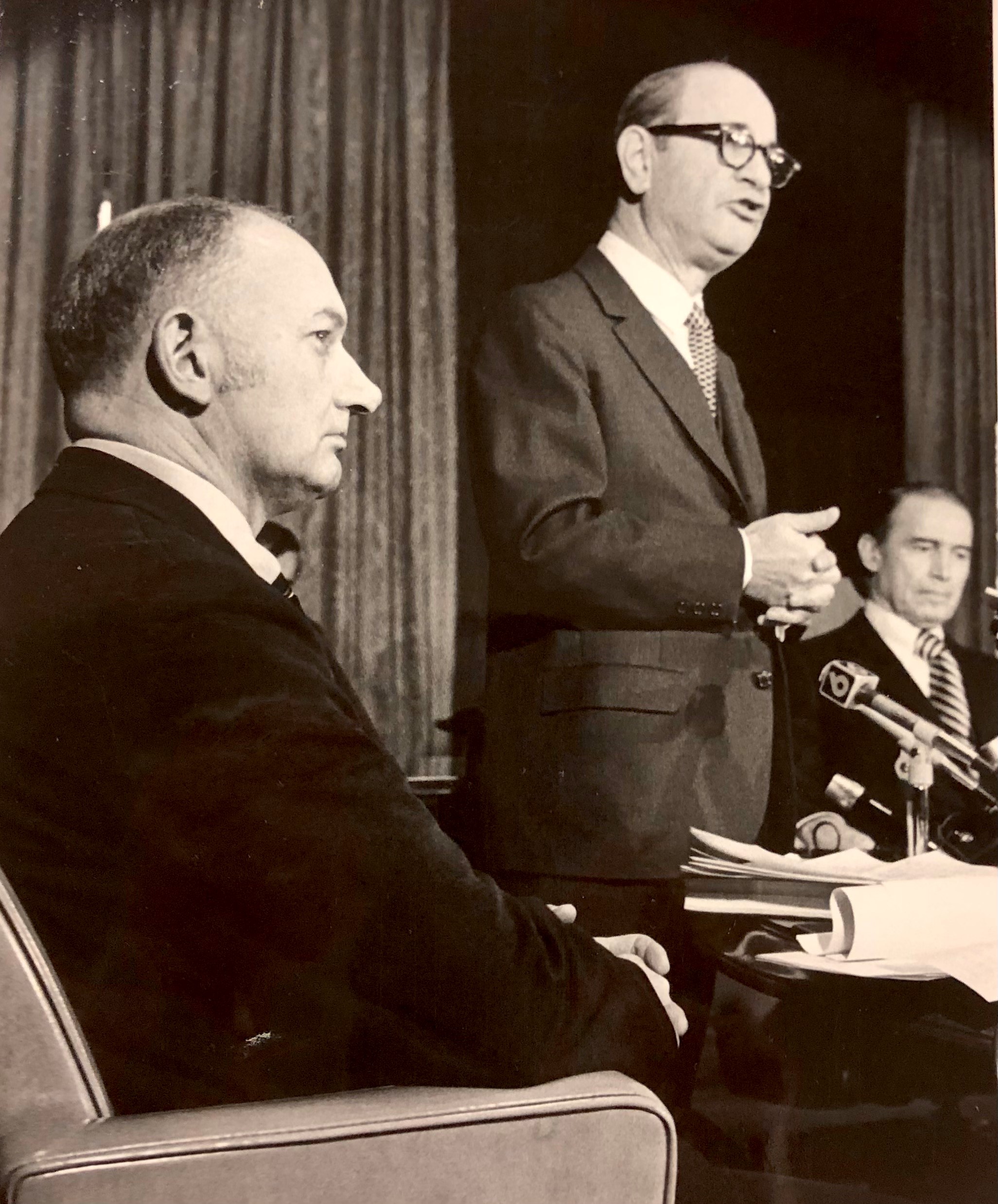This picture marks a pivotal moment in the history of New York’s Unified Court System. The date is January 15, 1974; the location is the Judges’ conference room at Court of Appeals Hall in Albany. Standing-up and speaking is the newly-elected Chief Judge of the Court of Appeals, Charles D. Breitel. To his right, sitting down, is then-Supreme Court Justice (and former Assemblymen) Richard J. Bartlett from Glens Falls. The event is a rare press conference during which Chief Judge Breitel announced the creation of a new position in the court system — a “Chief Administrative Judge” — that would be filled by Justice Bartlett. According to contemporary newspaper accounts, Chief Judge Breitel said that the designation of a statewide administrative judge for the courts was an important step toward reorganizing the court system to attain greater efficiency and better management. “For the first time, we will achieve a truly unified, centralized administration of the courts,” he asserted.
Indeed, Judge Bartlett’s appointment was the first step in a multi-year effort to build a modern court system in New York. The following month, on February 27, 1974, Chief Judge Breitel addressed both houses of the Legislature and called for numerous constitutional reforms, including the establishment of a centralized budget for the court system, merit selection for Court of Appeals Judges, and the creation of a Judicial Conduct Commission. Over the next few years, Judges Breitel and Bartlett (with the unwavering support of Governor Hugh R. Carey) achieved these and other goals by the passage of numerous constitutional amendments in 1977. Shortly thereafter, they established the Office of Court Administration. Given the numerous political and other challenges that they encountered long the way, their achievements are nothing short of extraordinary.
Judge Bartlett described these momentous events in his 2007 Hugh R. Jones Lecture, which you can access at https://www.albanylawreview.org/article/69420.

